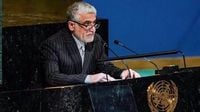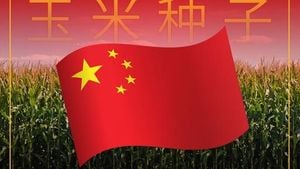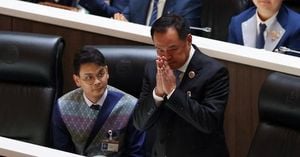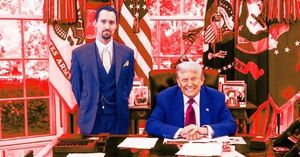As September unfolds, Iran stands at a dramatic crossroads, facing mounting challenges on multiple fronts that could shape the nation’s trajectory for years to come. The convergence of renewed nuclear tensions with Western powers, a deepening strategic pivot toward Beijing and Moscow, and the fallout from a violent summer marked by US-Israeli military strikes on Iranian nuclear sites have created a moment of reckoning for Tehran’s rulers and its people.
The most immediate flashpoint is the formal start of the United Nations “snapback” process to restore sanctions on Iran, triggered on September 5, 2025. According to International Crisis Group, European governments argue that Iran’s sustained non-compliance with key limits in the 2015 Joint Comprehensive Plan of Action (JCPOA) over the past six years leaves them no choice but to push for the reimposition of sweeping UN sanctions before September 28. Tehran, for its part, rejects this stance outright, insisting that the so-called E3—France, Germany, and the United Kingdom—lost their standing to enforce the deal after failing to deliver promised economic normalization following Washington’s withdrawal from the agreement in 2018.
Regardless of legal arguments, the likely return to a Chapter VII-related sanctions framework would bring familiar consequences for Iran: tighter constraints on arms transfers, reinforced financial isolation, and new layers of economic restrictions. These renewed measures threaten to deepen the strain on Iranian household incomes and further chill the country’s already precarious investment climate.
Scrutiny of Iran’s nuclear activities has sharpened in recent weeks. The International Atomic Energy Agency (IAEA) reported that Iran now holds about 441 kilograms of uranium enriched to 20% or higher—enough, by the agency’s own calculations, to yield material for around ten nuclear devices if further refined. IAEA Director General Rafael Grossi has emphasized the urgent need for verification and timely documentation, something Iranian officials have yet to provide. As International Crisis Group notes, two reports submitted to the IAEA’s 35-nation Board of Governors underline the seriousness of the situation: inspections must resume “without delay,” and the buildup of highly enriched stocks remains a “serious concern.”
Yet, the IAEA has stopped short of escalating the matter immediately, keeping communication channels open in hopes of restoring routine access. “There is no sign of diversion,” Grossi has said, but he continues to stress the importance of transparency and cooperation from Tehran.
Against this backdrop, Iran’s leadership is accelerating its eastward turn. President Masoud Pezeshkian’s high-profile diplomacy at the Shanghai Cooperation Organization (SCO) summit in Tianjin in early September was more than symbolic. Over a week of meetings with Chinese President Xi Jinping and Russian President Vladimir Putin, Pezeshkian sought to turn Iran’s long-touted “Look East” doctrine into tangible political and economic support. Iranian officials pressed for more than sympathetic rhetoric; they want Moscow and Beijing to back Iran’s claim that the snapback process is legally void and, crucially, to avoid implementing any reimposed UN measures.
For China and Russia, this is a significant ask. While both nations have often skirted US and European unilateral sanctions, openly discounting UN obligations carries implications for their global standing. Still, Pezeshkian reaffirmed Iran as a “reliable friend” to China and underscored Tehran’s readiness to operationalize a 25-year agreement with Beijing spanning energy, infrastructure, and technology. His session with Putin amplified the message: in Tehran’s view, China and Russia are now strategic anchors, not just transactional partners, in confronting Western pressure.
Iran’s full membership in the SCO, formalized at the Tianjin summit, provided a showcase for this reorientation. The organization’s emphasis on sovereignty, non-interference, and resistance to unilateralism dovetails neatly with Tehran’s narrative. However, the question remains whether this eastward pivot will yield real, durable benefits beyond diplomatic pageantry. Past efforts, especially under former President Mahmoud Ahmadinejad, delivered less than promised due to banking bottlenecks, compliance risks, and the gravitational pull of Western markets for Chinese firms.
Inside Iran, the “Look East” pivot is the subject of lively debate. Hardline outlets celebrate the emergence of an “Eastern front” that validates decades of resistance to Western dominance. Reformist and moderate voices, meanwhile, warn that overreliance on Moscow and Beijing could simply replace one form of dependence with another, potentially recreating the asymmetries of influence that the 1979 Revolution sought to overturn. The central uncertainty is whether this strategy can move beyond symbolism and episodic deals to provide the economic and technological lifelines Iran needs to weather renewed sanctions.
Complicating matters further, Tehran is still reeling from the aftermath of a violent June that saw direct military confrontation with Israel and the United States. On June 13, Israel launched an unprovoked assault on Iranian nuclear facilities, triggering a 12-day conflict that killed at least 1,064 people in Iran, including senior military figures, nuclear scientists, and civilians, according to Tehran Times. The United States joined the offensive by bombing three Iranian nuclear sites. Iranian ambassador to the United Nations, Amir Saeed Iravani, condemned these actions as a “blatant violation” of the UN Charter during a UN General Assembly session marking the International Day against Nuclear Tests on September 5. He warned that such attacks on safeguarded nuclear facilities undermine the Nuclear Non-Proliferation Treaty (NPT) and called for the international community to demand accountability for the violators.
“Dangers posed by nuclear tests are not confined to deliberate explosions alone; the threat or use of force against nuclear facilities entails equally grave risks,” Iravani said, as reported by Tehran Times. He also denounced Israeli attacks on Iranian cities hosting International Monitoring System (IMS) stations, which are part of the global verification network against nuclear testing. The ambassador cautioned that remaining silent on these attacks would be tantamount to betraying the memory of victims of nuclear testing and would undermine the “inalienable” rights of sovereign states.
Iran responded to the June strikes with retaliatory operations against both Israel and the United States, eventually halting the aggression by June 24. The episode has fueled Tehran’s narrative of resistance and further justified its calls for stronger ties with Beijing and Moscow.
As the snapback deadline approaches, the choices made by Iran’s leadership—on nuclear transparency, the depth of engagement with China and Russia, and the willingness to risk further confrontation with the West—will shape not only its nuclear trajectory and economic survival, but also the broader character of its grand strategy for years to come. Whether the “Look East” approach can deliver the stability and growth Iran seeks, or whether it will leave the country more isolated and constrained, remains the defining question of this critical moment.




